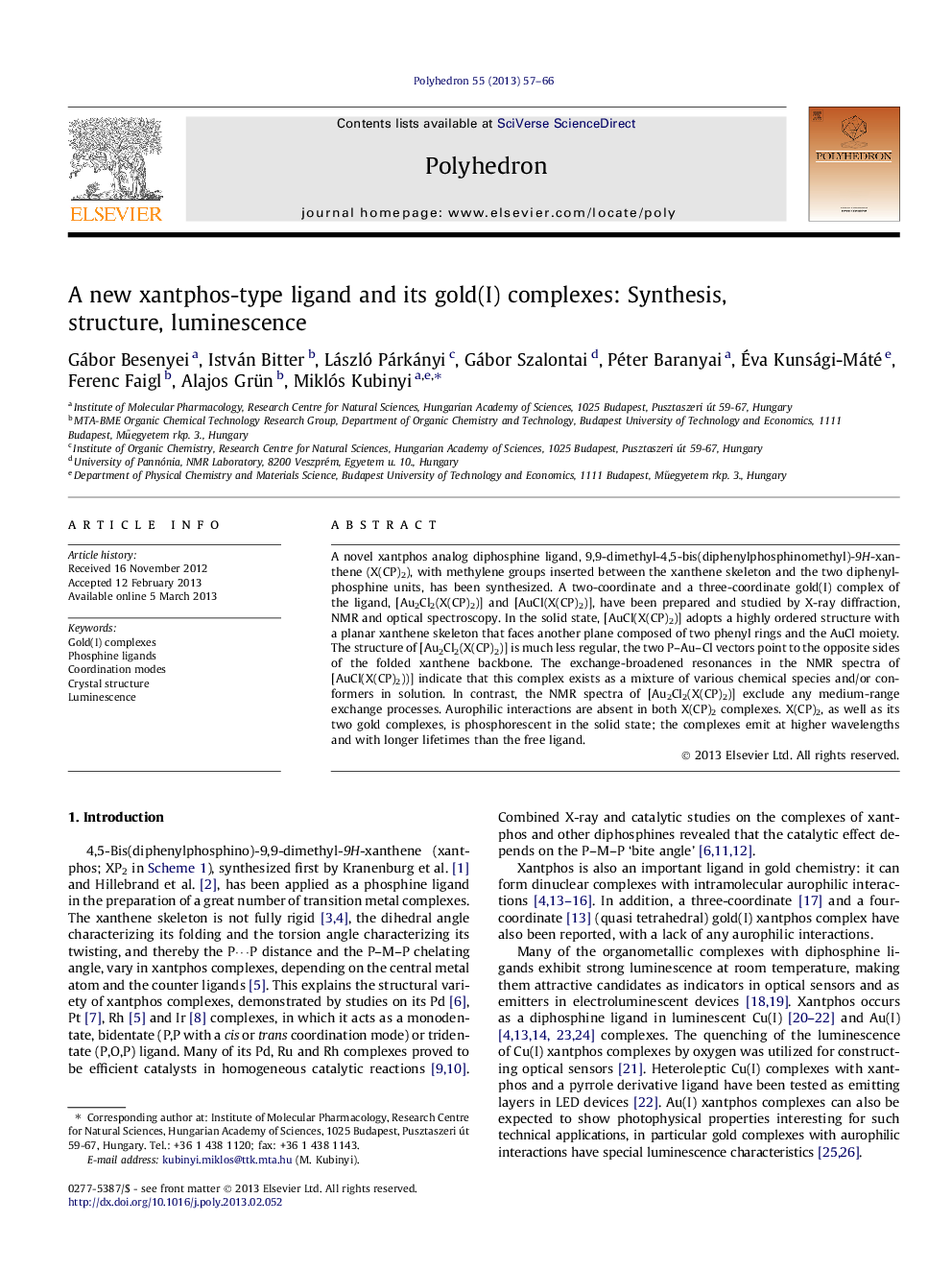| Article ID | Journal | Published Year | Pages | File Type |
|---|---|---|---|---|
| 1338422 | Polyhedron | 2013 | 10 Pages |
A novel xantphos analog diphosphine ligand, 9,9-dimethyl-4,5-bis(diphenylphosphinomethyl)-9H-xanthene (X(CP)2), with methylene groups inserted between the xanthene skeleton and the two diphenylphosphine units, has been synthesized. A two-coordinate and a three-coordinate gold(I) complex of the ligand, [Au2Cl2(X(CP)2)] and [AuCl(X(CP)2)], have been prepared and studied by X-ray diffraction, NMR and optical spectroscopy. In the solid state, [AuCl(X(CP)2)] adopts a highly ordered structure with a planar xanthene skeleton that faces another plane composed of two phenyl rings and the AuCl moiety. The structure of [Au2Cl2(X(CP)2)] is much less regular, the two P–Au–Cl vectors point to the opposite sides of the folded xanthene backbone. The exchange-broadened resonances in the NMR spectra of [AuCl(X(CP)2))] indicate that this complex exists as a mixture of various chemical species and/or conformers in solution. In contrast, the NMR spectra of [Au2Cl2(X(CP)2)] exclude any medium-range exchange processes. Aurophilic interactions are absent in both X(CP)2 complexes. X(CP)2, as well as its two gold complexes, is phosphorescent in the solid state; the complexes emit at higher wavelengths and with longer lifetimes than the free ligand.
Graphical abstractTwo- and three-coordinate gold(I) complexes with a novel xantphos-analog ligand, with methylene bridges inserted between the xanthene backbone and the diphenylphosphino groups, show marked differences in their structural and photophysical properties.Figure optionsDownload full-size imageDownload as PowerPoint slide
